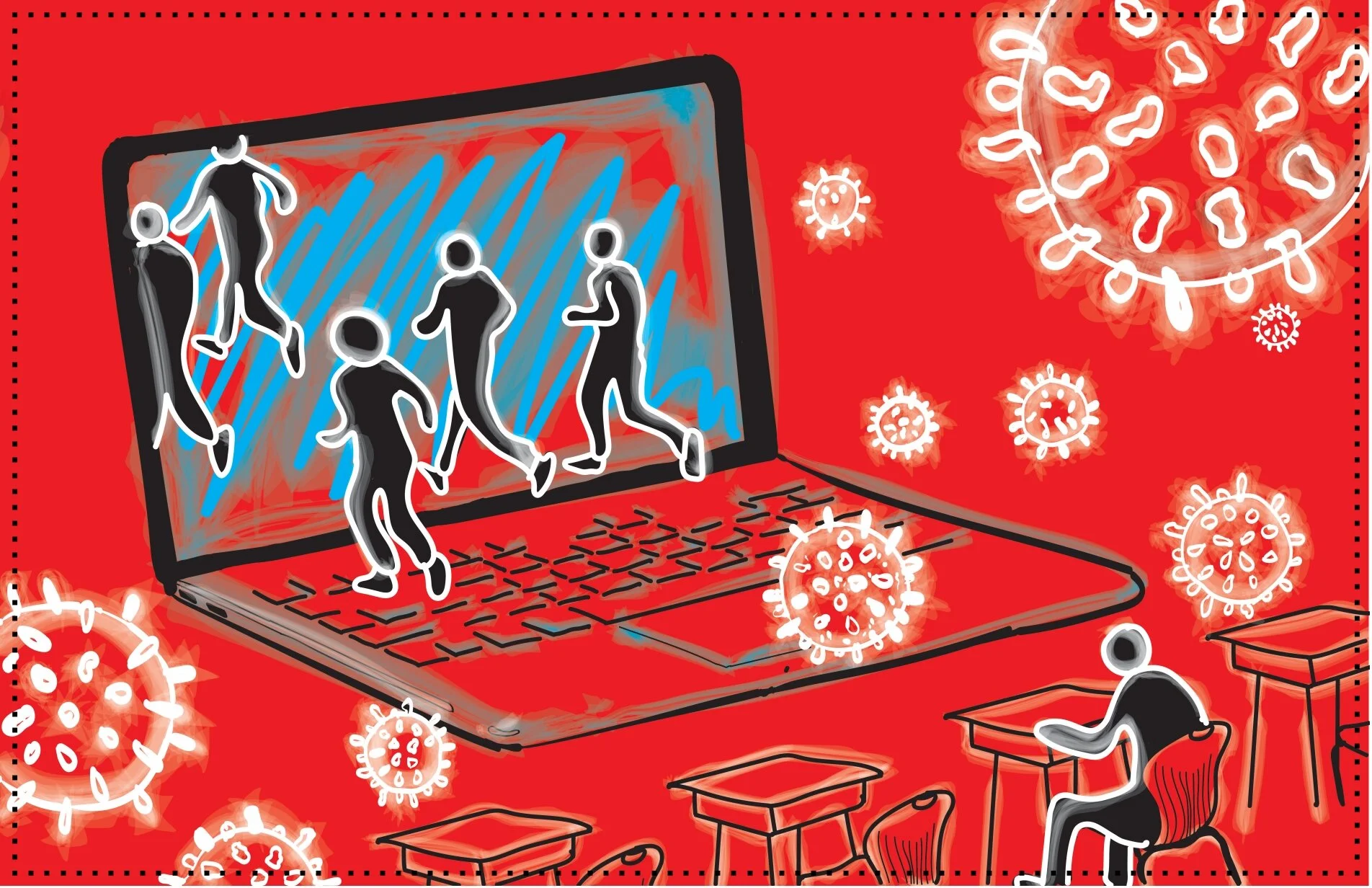Editorial | Pump the brakes on campus return
Illustration by RUPALI INGLE, Illustrator
Chapman undergraduates now have the option to come back to campus and take classes in person. This should be good news, right? After enduring another grueling semester of online courses, we thought we’d be chomping at the bit to return.
But that’s not really the case anymore.
The reversal doesn’t have to do with the concept of being back in-person. We really do want to go back to class, interact with our friends and professors and say adieu to whatever “the new normal” is. We miss the meetings we had for The Panther in the newsroom. We miss student organization gatherings and physical spaces to deconstruct and reconnect with others. Heck, we even miss Qdoba.
We all know online education isn’t as effective as in-person education. Most of us have felt more isolated, less inspired and more stressed. But as demoralizing as this situation can be, many of us have gotten to the point where we’re comfortable.
As many students probably saw in their emails from Chapman, the campus is reintroducing in-person classes because case rates in Orange County have more or less stabilized in the red zone of the state government’s four-tiered county risk level. But just because we can return doesn’t mean we should, especially since we’re still in a tier that’s color quite clearly symbolizes “danger.”
There is, of course, a definite chance this could work. Chapman has done a considerably comprehensive job of installing preventative safety measures. But cases on campus have taken an alarming jump over the past week – up to 36 as of Oct. 16, with an outbreak of 11 infected students in The K Residence Hall and eight infected students in the Chapman Grand apartment complex. The nature of the virus and its ability to spread inconspicuously is a problem Chapman can’t fully control. So why risk it?
Our concern is not the school itself. It’s what students do outside of the classroom and how transparent they are about it. There’s only so much a daily symptom questionnaire, guided foot traffic and new HVAC units can do to alleviate the fact that some people aren’t taking COVID-19 seriously enough. Those eager to return to class for physical interactions might very well be the same ones eager to hit up the Orange Plaza every weekend for a fun night out.
Even beyond physical safety, we’re worried that professors and students alike won’t be able to keep up with the hybrid learning model. Students and professors have ironed out the many kinks of working from our computers. We don’t want to face another adjustment period. Students who choose to remain virtual will likely fall behind, as professors simply can’t give as much attention to those through a camera as they can to those in person – particularly when they’re learning to balance two mediums of teaching. How is that fair to anyone?
In two weeks, if cases erupt, the administration may just release some kind of email or announcement imploring students to act more safely off campus, inevitably placing the blame on our shoulders. Yes, we have to take responsibility. Yes, we appreciate the on-campus testing and resources. And yes, we value and respect the willingness of our faculty and staff to put their health, and their families’ health, at risk for the sake of our education.
But with Zoom, there is absolutely no risk. We can still be taught remotely and although it’s not as effective, it’s safe.
There are a number of ways this plan can go terribly wrong, and there are also a number of ways we can possibly recover from an outbreak. But we should never be reactive when we have the choice right now to be proactive. The common denominator is the campus reopening. So watch yourself, Chapman; think about others before you think of yourself.

